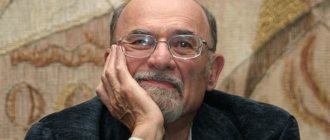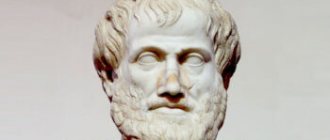The Stanford-Binet Intelligence Scale (the famous IQ test) is widely used in Europe and the USA. It is used to assess a child’s preparation for school, including those with a specialized focus, and the applicant’s readiness to enter a university. The level of development of intellectual abilities in quantitative terms is most often measured by the Stanford-Binet method.
The Stanford-Binet test is used in the following cases:
- Assessing the abilities of normally developing subjects and those with special needs.
- Diagnosing autism.
- Recognizing gifted children.
- Diagnosis of professional suitability.
- Research on the level of creativity.
- Drawing up an IQ-independent portrait of a child’s personality: indicators of activity, concentration, effort, confidence.
Intelligence Tests
Today, no fewer methods for assessing the level of intellectual development have been created than theories of intelligence. Since the very first, tools for measuring and assessing intelligence have become increasingly precise and standardized. Let's list them in chronological order.
Binet-Simon test (1905)
In 1885, the French government invited French psychologist Alfred Binet to develop a test to assess the level of intellectual development of children. The country had just passed laws requiring all children between the ages of six and fourteen to attend school, so a test was needed to screen out those who needed special educational accommodations. Binet and his colleague Theodore Simon compiled a series of questions on topics not directly related to school education
They assessed memory, attention, and problem-solving skills, among various other abilities. Binet found that some children answered more difficult questions, more suitable for older children, while their peers could only answer questions intended for younger children
Based on his observations, Binet developed the concept of mental age, a tool that allows one to evaluate intelligence based on the average abilities of children of a certain age group. The Binet-Simon Scale was the first test to assess intellectual development and served as the basis for all tests used today.
Stanford-Binet Intelligence Test (1916)
After the Binet-Simon scale became known in the United States, Stanford University psychologist Lewis Terman standardized it and began using it to test American children. An adapted version called the Stanford-Binet Intelligence Scale was published in 1916. This test uses a single indicator - intelligence quotient (IQ), which is calculated by dividing the mental age of the person being tested by his real age and then multiplying the resulting number by 100.
Army Alpha and Beta Tests (1917)
With the outbreak of World War I, the US Army began to need to assess the mental abilities of a huge number of conscripts. To solve this difficult problem, psychologist Robert Yerkes (then president of the American Psychological Association and chairman of the Committee on Recruit Psychological Evaluation) developed two tests called the Army Alpha Test and the Army Beta Test. More than two million people have completed them; This is how army personnel services determined what tasks could be assigned to a recruit and what position he was capable of filling.
David Wechsler Intelligence Scales (1955)
In 1955, psychologist David Wechsler developed another test to assess the level of intellectual development - the Wechsler Intelligence Scale for Adults. It was subsequently modified, and today a modified third version is used.
If in the Stanford-Binet test the level of intelligence is calculated on the basis of a person’s mental and true age, then when testing on the Wechsler Intelligence Scale for Adults, the test taker’s score is compared with the indicators of other people in his age group. The average score is 100. Today this tool is considered a standard method for testing human intellectual development. Published by econet.ru
Second edition of the Binet scale
The basis for verification and standardization, which was carried out by a team of employees at Stanford University, was the second edition of the Binet scale. This work was supervised by L. M. Termen. The basic Binet scale had many changes and was called the Stanford-Binet scale.
The scale had two differences from the Binet tests, namely, it included:
- intelligence quotient (IQ);
- the concept of “statistical norm”.
The intelligence quotient was proposed by V. Stern, who believed that the mental age indicator has a significant drawback - the same difference between mental and chronological age has different meanings for different age levels.
To eliminate the shortcoming, Stern proposed separating the quotient obtained by dividing mental age by chronological age. Stern called this indicator, multiplied by 100, the intelligence quotient. This indicator makes it possible to classify children according to the degree of mental development.
The concept of a statistical norm is another innovation that has become a criterion that allows one to compare and evaluate individual test indicators, giving them a psychological interpretation.
The Stanford-Binet scale, which includes tasks of varying difficulty, can be used to test children aged 2.5 to 18 years. Of course, the tasks are grouped according to age criteria. The average performance score (X) is 100 - this is the most typical for each age, and a statistical measure of the deviation of individual values from the average (
All individual test scores, which were limited to the numbers 84 and 116, were accepted as normal, i.e. corresponding to the age norm of performance. A test score above the norm - 116, indicates the child is gifted, and below 84 - indicates insufficient mental development.
Application
The test consists of four parts:
- Verbal reasoning;
- Quantitative Reasoning (Calculations);
- Abstract visual reasoning;
- Short-term memory.
The total score is presented as an IQ score.
Processing of the test should be carried out immediately after its presentation, since the following tasks are given depending on whether the child has completed the previous ones. Testing of younger children usually takes 30-40 minutes.
In addition to the IQ score, the Stanford-Binet test allows you to get an idea of some of the child’s personal qualities (activity, ability to concentrate, diligence, self-confidence). Qualitative observations should be recorded and then interpreted independently of the test results.
The Stanford-Binet test can be used to assess the abilities of both normal children and children with developmental disabilities. G. Lefrancois writes that the test can serve as an early diagnostic test for identifying autism, as well as for identifying gifted children.
The qualifications of the experimenter are very important for conducting the Stanford-Binet test. In order to obtain reliable results, an extremely experienced experimenter is required, since slowness, indecisiveness or minor changes in the wording of tasks can significantly affect the test results.
Do geniuses have to have a high IQ as a child?
Terman tested hundreds of elementary school students. It was then that the threshold value of 140 points arose. Obviously, the scientist did not want to recruit too large a group: it would be more difficult to track the progress of its participants. It is clear that the smartest 2% of people in the population would constitute a group twice as large as the 1%. In addition, the higher the threshold, the more potential geniuses there could be in the group. So why not skim the cream?
The group of incredibly smart boys and girls included 1,528 schoolchildren aged approximately eleven years. To say they were capable would be an understatement. Their average IQ was 151, with seventy-seven ranging from 177 to 200.
Until they reached middle age, study participants continually took a variety of additional tests. The result of the experiment was the monumental work “Genetic Studies of Genius”5 (Genetic Studies of Genius) in five volumes, published from 1925 to 1959. The last volume was published after the death of the scientist.
His highly intelligent charges - at least those who are still alive - are still being watched. They are jokingly called “termites,” meaning not insects, but a consonance with the name Terman.
Now the bad news: not a single person from this group became what is generally considered an undeniable genius. The incredible intellectual abilities of the subjects were transformed into very trivial careers of teachers, doctors, lawyers, scientists, and engineers.
Two—Robert Rue Sears and Lee Cronbach—became emeritus professors at Stanford University and continued research in which they themselves were participants, but in terms of fame they do not, of course, compare with Ivan Pavlov, Sigmund Freud or Jean Piaget, three undoubted geniuses in the history of psychology.
Moreover, many of the “termites” did not achieve any significant intellectual success at all. Their path was not connected with graduating from university or defending a Ph.D. dissertation, but with obtaining professions for which higher education is not necessary at all.
Further more. Of the many children who did not make it into Terman's group, at least two achieved much more recognition than the smart "termites".
This is Luis Walter Alvarez, one of the most brilliant experimental physicists of the twentieth century. His work on the hydrogen bubble chamber to study elementary particles earned him the Nobel Prize in Physics in 1968.
And William Shockley, the second termite candidate rejected by Terman, shared the Nobel Prize in Physics with two colleagues in 1956, and later founded the Shockley Semiconductor Laboratory, a semiconductor laboratory in his name in Silicon Valley, which was not yet called that.
And these are not the only examples among Nobel laureates. James Watson, one of the discoverers of the structure of the DNA molecule, and Richard Feynman, who worked on path integrals in quantum mechanics, also fell short of Mensa6 membership in their test scores.
So who needs these tests anyway?
Advertising
Literature
- Binet A., Simon T.
Methods for studying mental giftedness. GIZ. Ukraine, 1923 - Burlachuk L. F.
Psychodiagnostics: Textbook for universities. - St. Petersburg: Peter, 2006. - 351 p.: ill. — (Series “Textbook of the New Century”) - Venar Ch., Kerig P.
Psychopathology of the development of childhood and adolescence. - St. Petersburg: Prime-Eurosign, 2007. - 672 p. - Godefroy J.
What is psychology? Volume 2. - M.: Mir, 1992. - 376 p. - Ilyina M. N.
Psychological assessment of intelligence in children. - St. Petersburg: Peter, 2006. - 368 p. - Lefrancois G.
Applied educational psychology. - St. Petersburg: Prime-Eurosign, 2007. - 576 p. - Bain, S. K., & Allin, J. D. (2005). Book review: Stanford-Binet intelligence scales, fifth edition. Journal of Psychoeducational Assessment, 23, 87-95.
Multiple Intelligences
According to psychologist Howard Gardner's theory of multiple intelligences, it is impossible to quantify intelligence. The scientist argued that there are eight different types of intelligence, based on relatively independent abilities and skills, and that some of these abilities can be developed in an individual better than others. Initially, he identified seven independent types of intelligence: spatial (the ability to perceive visual and spatial information), verbal (the ability to speak), logical-mathematical (the ability to logically analyze a problem, recognize relationships between objects and think logically), bodily-kinesthetic (the ability to move and exercise physical control over one's own body), musical (the ability to perceive pitch, rhythm and timbre of sound and operate with sound patterns), interpersonal (the ability to understand and interact with other people) and intrapersonal (the ability to be aware of one's own feelings, emotions and motives). Subsequently, the scientist included naturalistic intelligence in his model - the ability of a person to live in harmony with nature, explore the environment, and learn from the example of other species.
Practical part: Binet-Simon technique
The problem of the world picture
4. Practical part: Binet-Simon technique
Purpose of the test
The Binet Simon test was originally developed back in 1905 and was used to differentiate between developed and gifted children and children who were not sufficiently developed for schooling.
More than 75 percent of children with average intellectual abilities had to successfully solve such a test. However, this test did not accurately determine the degree of understanding and intelligence of students. That is why the Binet Simon test was received ambiguously by psychologists and teachers of various educational institutions. However, the main merit of this test is that it laid the foundation for the assessment of a person’s intellectual capabilities, which made it possible to use this test in hiring and in psychological research.
Testing procedure
The first test for studying intelligence, the methodological principles of which formed the basis for subsequent psychometric techniques. The scale consists of tasks of increasing difficulty, grouped by age level. Each age level includes all tests that are performed by 80 - 90% of normal children. The tasks are designed to study the main components of intelligence: the abilities of judgment, understanding, logic, sensory and perceptual processes. The level of intelligence is assessed by the ratio of the actual “mental age”, determined on the scale, and chronological age.
Evaluation of test results
IQ = “Mental age” x 100 / “Chronological age”.
For example, a 5-year-old child coping with a task for 4 4-year-old children has an IQ = 4 * 100 / 5 = 80. Normally, the IQ value taken as 100 ranges from 70 to 130; with debility, IQ indicators are 70-50, with imbecility - 50-30, with idiocy - less than 30.
Test results
| Opponent | Testing time | Result | Result evaluation |
| Anya, 3.5 years old | 15 minutes | 90% | Norm |
| Sveta, 3 years old | 15 minutes | 110% | Norm |
| Kolya, 5 years old | 15 minutes | 70% | Norm |
| Vasya, 6 years old | 15 minutes | 50% | Moronism |
| Ira, 4 years old | 15 minutes | 30% | Imbecility |
Conclusion: the Binet-Simon test, proposed in 1905 by French psychologists A. Binet and T. Simon with the aim of screening out children (from 3 to 13 years old) who are not sufficiently developed to study in a regular school. The tasks included in it were selected so that they could be solved by 75% of children of the appropriate age, whose intellectual development could be considered normal. One can guess that the test is sensitive only to serious mental retardation, but it is hardly possible to identify a gifted child with its help.
Conclusion
The discrepancy between the ages of a child and an adult as a discrepancy between their pictures of the world is a phenomenological fact of the generation of the space of mental reality, given by the reversibility of various forms of activity of the child. Each of us knows that there is some kind of “I can’t.” For each there is something different - from the unbearable grinding of a knife on a frying pan to a TV show, and from it to the depths of experience - “I don’t live my life,” “I hate myself,” “I don’t understand.” , what happened with me". The ability to see our Self and non-Self in each of us, to one degree or another, is given by our (mine) others and other people’s (not my) others through the experience of the boundaries of our Self and our psychic reality.
At the beginning of a person’s life, this is a very important event - a meeting with another person, an event that determines the experience of age as one of the mental properties.
In a certain sense, we can say that at the everyday level, developmental psychology exists as people’s experiences about the influence of other people on them, since it is these experiences, as I would like to briefly show, that give the person himself the role and place of mental reality in the picture of the world.
So, what is developmental psychology and what are its main problems? There have been several answers so far:
1. This is the science of the facts and patterns of mental development of a normal healthy person.
2. This is the concept of another person that every person who lives among people has.
3. These are relationships between people of different ages, which allow each person to experience having his place in the system of relationships, that is, having a home for his soul.
4. These are attempts to measure changes in a person's life in units of time.
5. This is the natural course of the biological clock, which is realized by the person himself thanks to other people.
6. Finally, this is a projection of the researcher’s personal development onto his understanding of the laws of the life being studied.
The work of a scientist is connected with his awareness of the means of his own thinking; he builds a conceptual picture of the world. The average person can be guided not only by conceptual thinking, but also by feelings. Therefore, having learned the same thing, they cannot always understand each other. Then special tasks of applying scientific knowledge appear, this is a tone in people’s relationships that has appeared in our time and exists today, for example, as practical psychology[9].
Glossary
| No. | Concept | Definition |
| 1 | Thinking | An important stage of human cognition, it allows one to obtain knowledge about such objects, properties and relationships of the real world that cannot be directly perceived at the sensory level of cognition. |
| 2 | Self-awareness | The child’s awareness and assessment of himself as an individual - his moral character and interests, values, motives of behavior. |
| 3 | Time blur | A type of development of inadequate identification in which a teenager discovers an inability (persistent reluctance) to make plans and avoids growing up. |
| 4 | Picture of the world | A special form of theoretical knowledge that represents the subject of scientific research in accordance with a certain stage of its historical development, through which specific knowledge obtained in various fields of scientific research is integrated and systematized. |
| 5 | Reversibility | A logical skill, with which a child can make a series of mental steps, and then reverse them and return to the original situation. |
| 6 | Age-related psychology | A branch of psychological science that studies the patterns of stages of mental development and personality formation throughout human ontogenesis from birth to old age. |
| 7 | Ascertaining experiment | An experiment that establishes the presence of some immutable fact or phenomenon. An experiment becomes ascertaining if the researcher sets the task of identifying the current state and level of formation of a certain property or parameter being studied, in other words, the current level of development of the property being studied in a subject or group of subjects is determined. |
| 8 | Control experiment | A replication experiment designed to replicate and confirm the results of a previous study by specifically assessing the effect of a variable. |
| 9 | Methodology | A set of techniques, methods of teaching something, methods of expediently carrying out some work, process, or the practical implementation of something. |
List of sources used
1. Abramova G.S. Developmental psychology // Publishing house: Academic project, 2003, - 704 p.
2. Akrushenko A.V., Larina O.A., Kataryan T.V. Developmental and developmental psychology. Lecture notes // Publishing house: Eksmo, 2008, - 128 p.
3. Volkov B.S., Volkova N.V. Age-related psychology. In 2 parts. Part 1. From birth to school // Publisher: Vlados, 2010, - 368 p.
4. Gurova E.V. Developmental and developmental psychology. Tests // Publisher: Aspect Press, 2005, - 176 p.
5. Mukhina V.S. Age-related psychology. Phenomenology of development // Publishing house: Academy, 2009, - 640 p.
6. Nozhkina T.V. Developmental psychology: lecture notes, 2005.
7. Be careful, psychotherapy // Stern (German). — 1995 — No. 27
8. Pak T.S. Developmental psychology and age psychology // Publisher: Chelovek, 2010, - 48 p.
9. Khilko M.E., Tkacheva M.S. Age-related psychology. Lecture notes // Publishing house: Yurayt, 2010, - 208 p.
10. Sklyarova T.V., Noskova N.V. Developmental psychology for social educators // Publishing house: Orthodox St. Tikhon's University for the Humanities, 2009, - 336 p.
Applications
| A | Binet-Simon test for children · The only child in the family. Not really · Expressed activity and emotionality of the child. Not really · Reduced mental abilities as a result of impaired brain development during pregnancy and childbirth. Not really · Excessive adherence to principles of the mother. Not really · Impulsive behavior of the father, acting, as a rule, according to the first internal impulse. Not really · Emotional rejection of children in the first time after birth (due to the discrepancy between their gender and what parents expected, unpreparedness to have children and lack of need for them). Not really · Lack of parental affection and spontaneity in expressing feelings. Not really · Increased excitability of the child. Not really · Restriction of physical activity and physical punishment Not really · Force-feeding (and coercion in relation to food in general). Yes Yes · Difficulties in emotional contact (including with parents of the opposite sex). Not really · Psychological “infection” from adults (adults in the same bed with a child, excessively caressing and kissing on the lips, swinging on their feet at an early age and being too careful in observing hygiene measures: washing girls, etc.). Not really · Physical irritation of the genital area (tight clothing, inflammation, itching, diaper rash, foreign bodies, etc.). Not really · Preference for meat, spicy and sweet foods with insufficient (irregular) water intake. Not really · Lack of strong interests in something, frequent boredom and complaints about having nowhere to spend time. Not really · Games in attics, basements, etc., about the content of which the child cannot say anything intelligible (and the facial expression is excited and determined, and not inspired and enthusiastic). Not really · Provocative behavior of adults who generalize their own experiences in “warnings” and thereby pass them on to children (“Look, if I see you with these women who let you do whatever you want for money!”). Not really · Exposing an undressed child in front of peers, undertaken by kindergarten teachers as punishment (currently or previously). Not really · Frequent viewing of videos that combine eroticism with fear (erotic horror films). Not really · Increased lethargy of the child Not really Get result |
[1] Abramova G.S. Developmental psychology // Publishing house: Academic project, 2003, - 12 p.
[2] See, for example, Caution, psychotherapy // Stern (German). — 1995 — No. 27
[3] B. Preyer “The Soul of a Child” (St. Petersburg, 1891, - 198 p.)
[4] Sklyarova T.V., Noskova N.V. Developmental psychology for social educators // Publishing house: Orthodox St. Tikhon's Humanitarian University, 2009, - 217 p.
[5] Mukhina V.S. Age-related psychology. Phenomenology of development // Publishing house: Academy, 2009, - 201 p.
[6] Abramova G.S. Developmental psychology // Publishing house: Academic project, 2003, - 36 p.
[7] Volkov B.S., Volkova N.V. Age-related psychology. In 2 parts. Part 1. From birth to school // Publisher: Vlados, 2010, - 198 p.
[8] Khilko M.E., Tkacheva M.S. Age-related psychology. Lecture notes // Publishing house: Yurayt, 2010, - 158 p.
[9] Abramova G.S. Developmental psychology // Publishing house: Academic project, 2003, - 44 p.
The problem of the world picture
Information about the work “The problem of development in developmental psychology”
Section: Psychology Number of characters with spaces: 45908 Number of tables: 3 Number of images: 0
Similar works
Tickets for the basics of developmental psychology for the spring semester 2001
22370
0
0
... generation. Head department ————————————————— Examination card on the subject FEATURES OF AGE PSYCHOLOGY Ticket No. 12 61) Periods of mental development in childhood. 62) Development of speech in children aged 1.5 - 2.5 years. 63) The semantic orienting basis of the action and its significance in the initial period of school life. 64) Standard…
Age-related psychology
670247
1
3
... took even more time. In the 12th century, when other ages were assigned status, it was completely absent, and even now the process of its differentiation has not been completed. In particular, in the English-language literature on developmental psychology, such a division is still practically absent: the transition period from childhood to adulthood, which is associated with a chronological framework from 10-12 to 23-25 years, ...
Research methods of developmental psychology
55357
1
0
... Modern researchers more often use observation as a method of collecting data at the initial stage. However, sometimes it is used as one of the main ones. 2.2 Experiment as a method of researching developmental psychology An experiment involves the active intervention of a researcher in the activities of a subject in order to create conditions in which a psychological fact is revealed. The researcher intentionally...
Main problems of developmental psychology
24149
0
0
... traits throughout my adult life. As a result of development, a personality enters into life and is further formed in life - a subject of practical and theoretical activity 2. Main problems of developmental psychology 2.1 Category of age One of the main issues considered in the framework of the study of developmental psychology is the concept of age. Age is a category used for...
General intelligence
British psychologist Charles Spearman proposed a two-factor theory of intelligence, according to which two factors can be distinguished in the structure of intelligence: the g-factor, that is, the general or general ability, and the s-factor, or specific to a particular mental activity. Thus, according to the scientist, there is a certain general intelligence that determines the mental abilities of a person as a whole, or g-factor; and it can be accurately measured through a special test. Spearman found that people who scored well on one cognitive test also did well on other intelligence tests, and that those who scored poorly on one test did not do well on others. Based on this, the psychologist concluded that intelligence is a general cognitive ability that can be measured and quantified.
How to find out the IQ of those who lived before the invention of the test?
At the beginning, I suggested Googling celebrities with high IQs. All of them were alive at the time of the search and probably passed some version of the test. However, the results often include completely incredible ones: for example, the IQ level of people who died before the test was invented.
Here is the list I found on one site:
- Austrian composer Wolfgang Amadeus Mozart – 165
- British scientist Charles Darwin - 165
- German philosopher Immanuel Kant - 175
- French mathematician Rene Descartes – 180
- Italian scientist Galileo Galilei - 185
- French mathematician Blaise Pascal – 195
- British political scientist John Stuart Mill (pictured below) - 200
The brilliant creators of the past have surpassed the renowned talents of the present. But where did these results even come from? All of these luminaries died long before 1905, the time of the creation of the first IQ test!
Surprisingly, the IQ scores of the long-dead are closely related to the IQ scores of Terman’s “termites.” And that's why.
A few years after beginning his study of 1,528 highly intelligent children, Terman had a new graduate student, Katherine Cox. Since her teacher's project was already well advanced, she realized that it would be difficult to use any part of it in her doctoral dissertation, and decided on a bold alternative. If Terman wanted to find out whether children with high IQs would become geniuses, why not take a different approach? Take generally recognized geniuses and, based on the facts of their biographies, estimate what IQ they might have had in childhood.
Sketching out a list couldn't be easier. Nowadays, all you have to do is type “famous scientists” or “famous artists” into Google (by the way, try it). In the pre-Internet era, Catherine Cox searched biographical dictionaries and other reference books. She was lucky - she found an already published list, from which she wrote down the most famous: 192 creators and 109 historical leaders - a total of 301 people.
Undoubtedly, her list contained iconic figures of Western civilization. In addition to the seven aforementioned personalities, these were Isaac Newton, Jean-Jacques Rousseau, Miguel de Cervantes, Ludwig van Beethoven and Michelangelo, as well as Napoleon Bonaparte, Horatio Nelson, Abraham Lincoln and Martin Luther - in general, those who were later awarded an extensive biographical article in Wikipedia.
How could one calculate the IQ of these geniuses of the past?
Advertising
However, at that time, IQ was literally understood as “intelligence quotient” and was calculated simply: the child’s psychological age was divided by his actual age, and the result was multiplied by one hundred.
Psychological age was determined by performing intellectual tasks corresponding to different ages. Thus, if a five-year-old could cope with tasks for ten-year-olds, his IQ would be 200 (10 / 5 * 100). It's very simple, isn't it?








